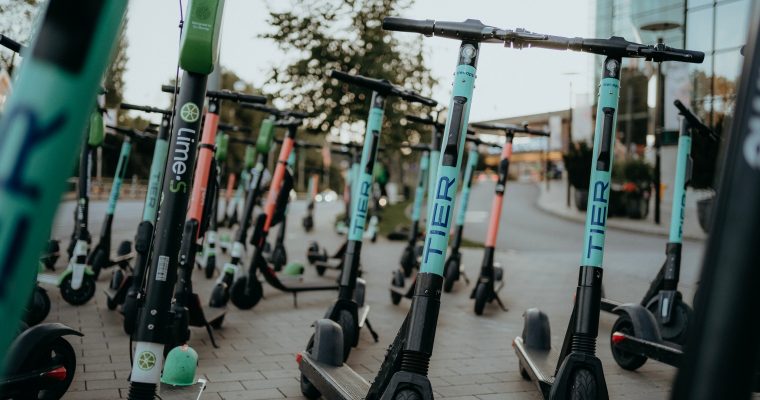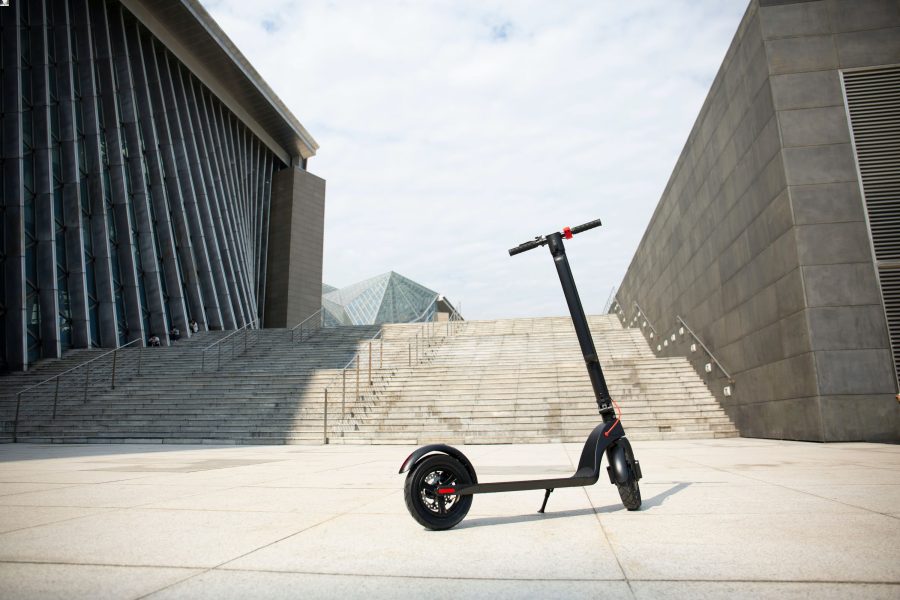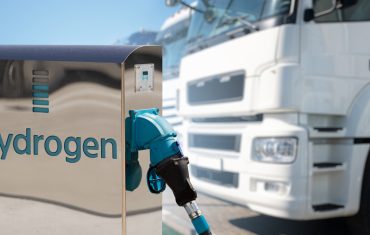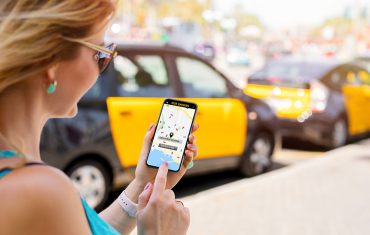
What are the laws for e-scooters in Australia?
For your employeesElectric scooters can be a great low-cost alternative for people keen to abandon internal combustion engine vehicles for a more environmentally friendly way of travelling around our large, busy cities.
While they’ve been available in some form or another since 2016, it’s only with the rise of groups like Lime and Neuron – and their participation in trials in Victoria, NSW and South Australia – that their acceptance and use is becoming more widespread.
As the popularity of e-scooters increases, some road safety experts are concerned they will lead to an increase in injuries and fatalities, as has been seen in many overseas jurisdictions already. In September 2022, the Australian Medical Association called for increased regulation on e-scooter use.
“E-scooters arrived with great fanfare,” AMA President Stephen Robson told ABC Radio, “But not with a lot of education.”
To date, e-scooters are legal to ride in Queensland, Tasmania, Western Australia and the ACT. On the other hand, Victoria, South Australia and New South Wales are undertaking detailed trials around their use and possible legislative requirements if they’re to be adopted as a legal means of travel in the future.
It’s fair to say there’s confusion around the state of play for e-scooters in Australia, so we’ve put together this handy list of the laws governing their implementation from state to state.
For brevity’s sake, take it as read, in every state and territory, e-scooter riders must wear helmets and be under the legal blood alcohol limit. Mobile phone use is prohibited, drivers must stay under the speed limit, and it’s illegal to have more than one person on an e-scooter at a time.
Victoria
Technically, e-scooter use in Victoria is illegal, except where their use falls within the conditions of a trial currently being conducted by the State Government.
Six months was added to the original 12-month trial period in April 2023, and the conditions of this trial were amended to state that e-scooter use is legal for riders aged 16 years and over (down from age 18 prior to April 2023) in the Local Government Areas of Melbourne, Port Phillip, Yarra and parts of Greater Ballarat. Other LGAs can apply to be part of the trial.
Privately owned e-scooters can now be used legitimately alongside those supplied by approved commercial hire operators Lime and Neuron. They can be used on shared-use footpaths, and roads that have a maximum speed limit of 60 km/h.
The maximum speed limit for an e-scooter is 20km/h. If the e-scooter you’re riding is capable of doing more than 25km/h, though, it’s considered to be a high-speed e-scooter, which is illegal for the purposes of this trial. Get pinched riding a high-speed e-scooter and you’ll find yourself with a fine that will set you back $925.
Fines for speeding on an e-scooter start at $185. Using a mobile phone while riding an e-scooter carries with it a $555 fine, getting caught riding without a helmet will set you back $231 and failing to obey traffic lights carries a $462 fine. If you’re riding an e-scooter and a breath test reveals you have a blood alcohol concentration over 0.05, you’ll cop a whack the same as you would behind the wheel of a car, ranging from hefty fines and licence cancellation to even jail time.
You can find the full list of e-scooter fines for Victorian riders here.
South Australia
In South Australia, e-scooters – like hoverboards, self-balancing scooters, segways and electric skateboards – fall under the umbrella of motorised wheeled recreational devices.
E-scooters are currently illegal in South Australia, although they are being trialled in different parts of Adelaide. Under this state’s law, e-scooters can only be used on private property because they’re considered to be motor vehicles, and a motor vehicle requires a driver’s licence, registration and compulsory third-party insurance.
The catch, if you will, is that current e-scooter designs don’t meet the required safety standards under Australian Design Rules, so they can’t be registered. Failure to comply could result in fines for driving unregistered and uninsured and, in some instances, for not holding the appropriate driver’s licence.
Get caught driving an unregistered vehicle in South Australia and you’ll find yourself $7,500 lighter in the hip pocket, while piloting unlicensed carries with it a range of fines. If you have previously held a licence, you could face a fine of up to $1,250. If you’ve never held a licence, you can double that to $2,500.
If you get pinged a second time for driving without a licence or driving while disqualified, it’s a mandatory three-year ban AND either a $5,000 fine or 12 months as a guest of His Majesty in the lock-up.
Queensland
Under Queensland law, e-scooters fall in the category of personal mobility device and are therefore legal in the Sunshine State. You need to be 16 years of age or older and, if you’re under 16 years old, it’s okay to ride an e-scooter under adult supervision, although it’s illegal for kids under 12 years of age.
As well as being over 16 years old, riders must wear a helmet that conforms to AS 2063. If you’re using your e-scooter at night or in weather conditions that make it difficult to see, your scooter must have a white flashing or steady light on the front that can be seen from over 200 metres ahead, plus a red flashing or steady light with the same range on the back.
Along with the other requirements, e-scooter riders are required to stay to the left of bike and shared paths, and can’t exceed a speed of 25 km/h.
New South Wales
The use of eScooters in NSW is currently illegal although, much like Victoria, you can use commercial eScooters in Bungarribee Park, Lizard Log and Shale Hills in Western Sydney, and the Australian Botanic Garden Mount Annan, as part of a NSW state government trial running until July 2023. An additional trial also began at Lake Macquarie in December 2022.
Be aware that you need to be 16 years of age or older to hire and legally ride an eScooter at one of these trial locations.
If you’re found using a privately owned eScooter on a NSW road, you’ll be fined for riding an unregistered and uninsured vehicle, in which each offence carries a $704 fine.
Western Australia
Under the banner of e-ridables, eScooters are legal in Western Australia. You can use an eScooter with more than 200 watts of power, and one that is capable of exceeding 10km/h, on footpaths, bicycle paths, shared paths and local roads without centre lines at a maximum speed of 50 km/h or less.
You need to be 16 years or older to legally ride an eScooter, and you’re limited to 10 km/h on footpaths, and 25 km/h on bike paths, shared paths and local roads.
Tasmania
EScooters are legal in Tasmania under laws for personal mobility devices. Much like Western Australia, they can be used on footpaths, shared paths, bicycle paths; local roads with a speed limit of 50 km/h or less, no dividing lines or median strip, and no multiple lanes if it’s a one-way road.
Maximum speeds for eScooters are 15 km/h on footpaths, and 25 hm/h on shared paths, bicycle paths and roads. You’re legally required to have front and rear lights for riding at night and in poor weather conditions.
Children under the age of 16 can ride eScooters with a motor that generates less than 200 watts and has a maximum speed of 10 km/h.
Northern Territory
Privately owned eScooters are illegal in the Northern Territory. Only eScooters provided for hire by Neuron in Darwin can be used in public places, which is similar to Melbourne, Sydney and Adelaide.
To hire and ride an eScooter in the Territory, you need to be 18 years of age or older, and you need to be wearing an approved bike helmet. You can only ride on footpaths and shared paths and bicycle lanes, you must keep to the left, and you must give way to pedestrians.
EScooters are restricted to use on roads in the Northern Territory for a distance of less than 50m if there’s an obstruction on a footpath, nature strip or shared path, or it’s “impracticable” to travel on the adjacent area.
Furthermore, eScooters are speed limited to 15 km/h, must be fitted with an electronic warning device and with front and rear lights for operation at night.
Australian Capital Territory
Like Western Australia, Queensland, and Tasmania, eScooters are legal in the ACT, and riders under the age of 12 must be supervised by an adult.
EScooters can be used on Canberra’s shared paths and footpaths; however, riders are expected to give way to pedestrians. They are also forbidden on roads or on-road bicycle lanes, except on residential streets where there’s no footpath, and are prohibited along the light rail corridor.
As a courtesy to those on foot, eScooter riders should always obey pedestrian traffic lights when crossing at lights. The speed limit for an eScooter on a shared footpath or cycle path is 25 km/h, 15 km/h for footpaths and 10km/h when at a crossing.
eScooters, or the rider themselves, must be fitted with a light and reflectors when riding at night or in bad weather.
Scoot or not?
As well as helping reduce carbon emissions and reversing the effects of climate change, eScooters are great fun to use. But, like all motorised vehicles, the consequences of ignoring the safety considerations and the laws, however vague, that govern their use can have serious consequences — financially and physically.
We can expect rules and regulations for eScooters to evolve and adapt in coming years, given their rapid adoption and the need for road safety. In the meantime, riders are encouraged to err on the side of caution and take it easy on eScooters. The alternative could be fatal.

Start a conversation about changing mobility with SG Fleet today.
 Driving Insights
Driving Insights



